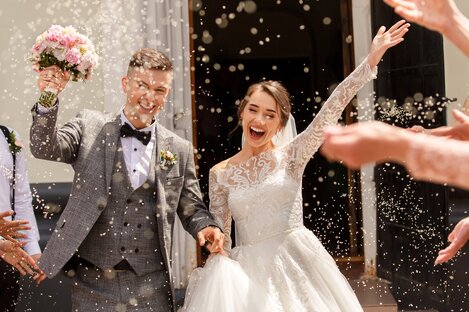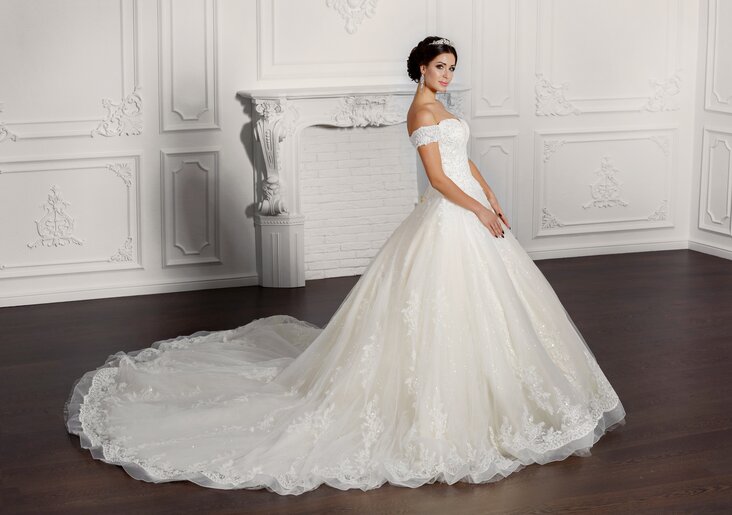For most brides, the highlight of their wedding day is their bridal gown. While most brides are impressed by ready-made wedding dresses, there’s no harm in designing your dress from scratch.
Say you’ve made several trips to the bridal shops but still haven’t found the perfect wedding dress. Or you may have tried several designs and pieces, but none seemed to fit perfectly. If choosing a wedding dress from the shops is fruitless, fret not! You can make a custom-made wedding dress.
The beauty of a custom wedding dress is that it incorporates your designs and style. This way, you’ll enjoy the day and have the best memories. As such, it’s essential to understand the process of designing the dress. Here’s how to create the perfect custom-made wedding dress:
1. Find A Unique Style
Wedding dresses are available in various styles. The styles keep evolving as time goes by. It’s possible not to find a dress that matches your tastes and preferences from designer stores and shops. A custom-made dress will be the solution if you’re such a bride.
The first order of business is to have the right style in mind. Remember, you must paint your designer the right picture to have them make the exact dress. Thus, it’s essential to do some research on typical bridal gown styles, as outlined below:
- Ball gowns
- Mermaid dresses
- A-line
- Silhouettes
- Tea length
- Sheath
Designing your wedding dress can be challenging. The details that typically go into it require an expert’s input. Luckily, you can get style inspiration from several sources. For instance, you can check a bridal dress collection at your local store. Alternatively, you can log into several fashion websites and get inspiration from several wedding dress collections. On that note, you can click here if you want to look for some bridal dress inspiration. Design a fantastic wedding dress that’ll steal the show at your long-awaited once-in-a-lifetime event.
You can ask your mom, best friend, and maid of honor for their opinion. Their input can help you decide what would be the best style. When choosing your dress styles, consider some factors, such as your body type. For instance, A-line dresses are perfect for pear-shaped brides; basque dresses are great for slender bodies or short torsos; and mermaid dresses are ideal for hourglass figures. Designing a dress that suits your body type will be outstanding, and you’ll certainly look the part.
2. Hire A Designer
After getting the most appropriate style, you’ll need a designer to make the dress. You must be strategic when choosing one because you rely on them to deliver your dream dress. With the right designer, you have nothing to worry about.
When choosing a designer to work on your custom-made wedding dress, it’s vital to consider some factors such as:
- Cost: Since they’re making the dress from scratch, working with one within your budget is essential. You can get some quotes and estimates from several designers to choose the most affordable option. Note that the cost depends on the fabric, design, and details. Thus, expect it to be slightly higher than the ready-made designs.
- Experience: The last thing you’d want to happen is to hire a designer that won’t capture the details and make you the perfect dress. Chances are you have asked around for recommendations on the best. It could also be your first time working with them. So, it’s best to know their expertise and research their works.
You can ask if they’ve handled such a style previously. You can also ask for proof of their previous work. It can be in photographs or videos. You’d want to pay attention to the seams and quality of the dress. This way, you’ll be able to decide if they’re the right pick for your wedding dress.
- Time: You should also consider the time they’ll use to make the dress. Your designer needs enough time to work on the designs to get all the details right. If you rush them, they might not capture all the details. You should be able to schedule a fit-in day to make some adjustments. You wouldn’t want D-day to arrive, and your dress isn’t yet ready. For this reason, it’d be best to agree on a deadline.
To make an informed choice on the right designer, evaluate their experience and make enough room for adjustments to have your perfect wedding dress. The bridge between your perfect custom-made dress is the designer. Thus, you have no room for mistakes. However, don’t micromanage the designers. You need to relax and let them work on your dress.
3. Draw Some Sketches
Visualizing your custom design is essential. Your designer can advise you on what is or isn’t possible with sketches. Remember, the patterns and designs should blend well for the dress to stand out. As such, sketching is essential. It gives you an overview of what to add or remove. You’ll also visualize the back and front of your dress.
At this stage, you can make some changes before the designer gets into cutting the fabric. Remember, the more mistakes with the material, the more expensive the dress gets. Therefore, you can reduce the cost spent on fabric by working thoroughly on the sketches. Do all the necessary alterations and modifications at the sketching stage.
4. Take Measurements
Taking body measurements is essential when making a custom-made dress. It ensures the dress is of the correct size and reduces the chances of running out of material because of underestimation. Remember, the material and fabric come at a cost, and you wouldn’t want to waste any portion. Getting the body measurements right eliminates the need for further adjustments on the dress once tailored.
Failure to get the correct measurements results in a non-appealing dress. For instance, if you go for a long sleeve dress, the hand’s length should be the exact cut. Otherwise, they’ll hang loosely, and your dress might not be classy. Also, other details such as shoulders, waist, bust, and neckline must be accurate for a perfect fit.
5. Add Personalized Details
If you want to make a fashion statement, personalized details are essential. With custom designs, you choose what to add or remove from the dress. The details make your dress unique and chic. Here are some insights on customizing your wedding dress:
- Neckline: There are wide neckline varieties you can choose from. This includes the following:
- Open neck
- V-shaped neckline
- Straight neckline
- One-shoulder neckline
- Off-shoulder neckline
- Plunging neckline
- Illusion neckline
- Boat neckline
Ultimately, the neckline type you choose determines how much bust and neck skin you’ll flaunt.
- Beading: You can add embroidering beads to your dress. Alternatively, you can go for a beaded waistband or rock a belt.
- Sleeves: Decide if you want to wear a tube or sleeve dress. If it’s the latter, you can wear full or short sleeves or spaghetti straps for your wedding.
- Buttons: Consider using buttons if you want a design that creates a bustle.
- Crinoline: This is used that holds the wedding gowns skirt. You can use this if you’re going for a ball gown or a tea-length dress.
- Additional lining: If you consider the ball gown camisole too much, you can have an extra lining, and you’ll transform the look of your dress.
Personalized details enhance your style. However, using all the above details can result in an overwhelming wedding dress. On the other hand, choosing a few details can elevate your look and prevent committing a fashion faux pas. Moreover, selecting details that fit your personality and body would be ideal. This way, you’ll make a fashion statement and look chic.
6. Schedule For Alterations
Every bride wants a wedding dress that fits like a glove. In most cases, the perfect fit comes with some adjustments. A dress that is too tight or loose can be uncomfortable and may not be the best way to spend your wedding day.
On your wedding day, you’ll have several memories and pictures captured. Therefore, you’d want the dress recognized as a masterpiece even years later. One rule of thumb when it comes to customized clothing is you don’t wait until the last day.
Coordinate with your designer and have more than one fitting. It helps you decide whether you need more alterations or improvements on the dress. If you skimp on this process, you might look less attractive when the time comes. Some alterations you can make to the dress include:
- Shortening the hem
- Train loop and button fixing
- Hips and waist adjustment
- Shortening the straps
- Adjusting the neckline
- Adding a waist stay
- Altering the closure
In the course of planning your wedding, you might lose some weight. As such, your dress will need some adjustments. Scheduling for the adjustments makes it possible to resize the dress to the perfect fit.
Schedule for alterations a week before the wedding day. You’ll have enough time to take it to the dry cleaners and have it pressed and ready for your event.
Conclusion
Every bride’s dream is to wear the perfect dress on her wedding day. If you can’t find a wedding dress on the racks, you can custom-design one. You’ll have the luxury of deciding on the style and details of the dress. The goal is to look the part and enjoy a fitting dress. Ensure you work with a qualified designer to highlight the elements you like.


